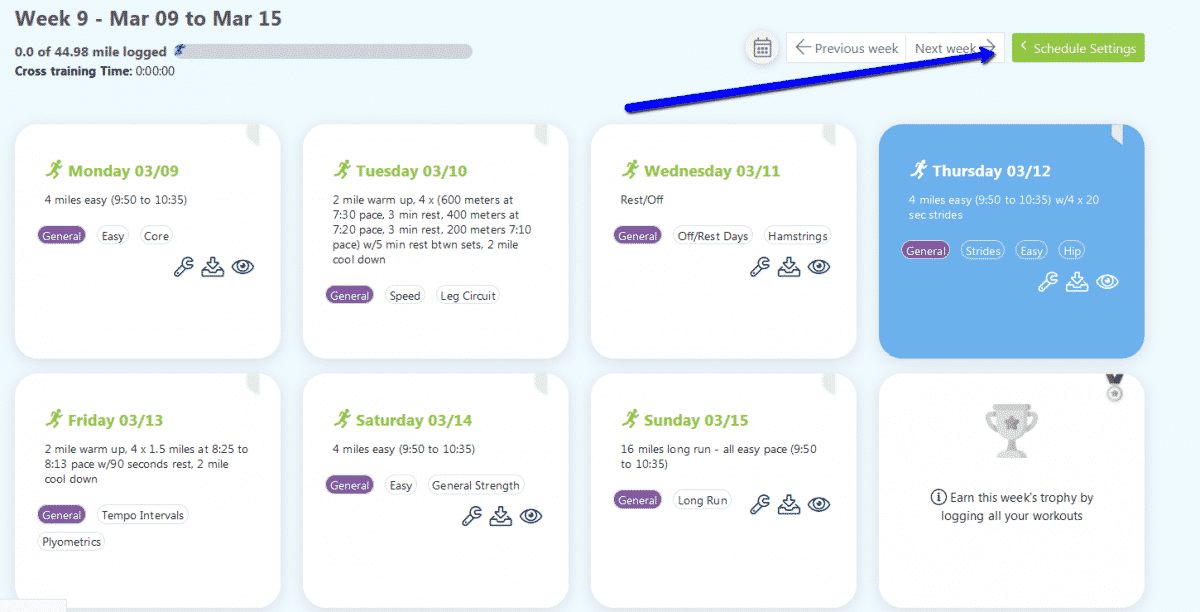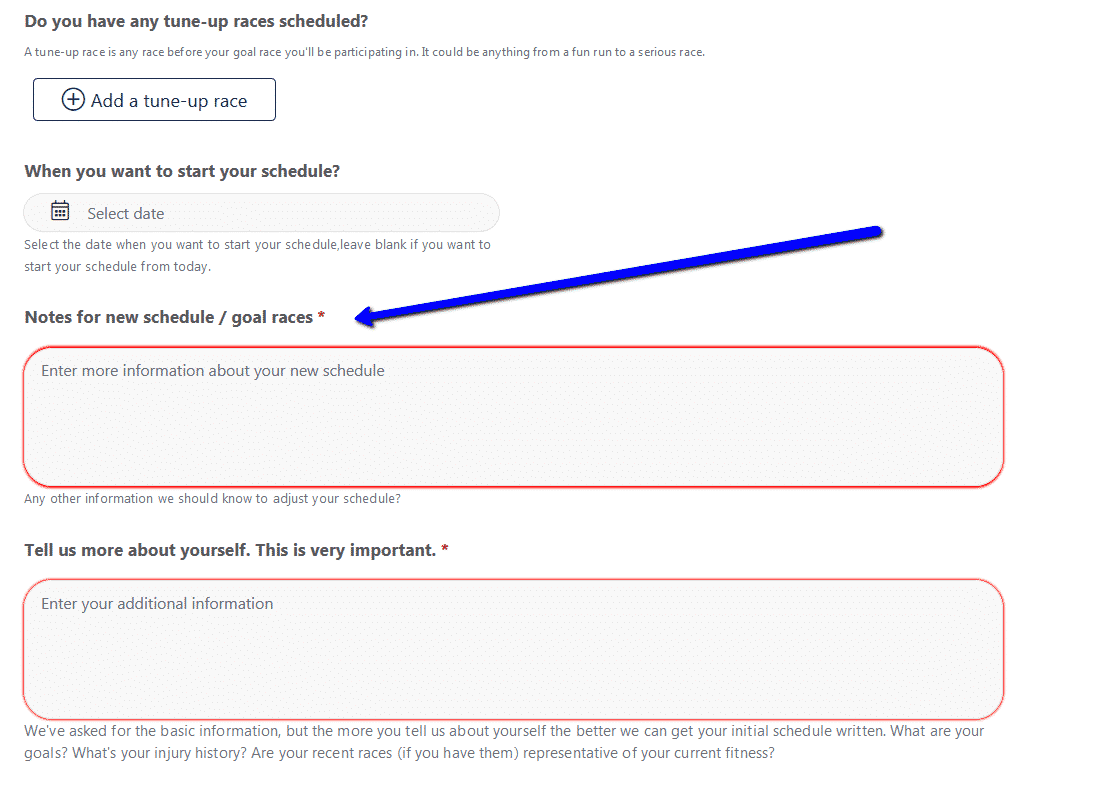If you’re reading this article, I know you’re not in a great mood. Your race is likely cancelled or postponed due to Coronavirus.
All the preparation, hard work, and miles on the road seem like they are about to be a waste thanks to something out of your control.
While there’s nothing I can do to truly make you feel better, my hope is that with this article I can give you a good guide for…
- How you can make the most the training you have put in.
- Potentially adjust your schedule for another race down the road
- Shift your mindset so something good can come out of this.
For a quick scan of the article, here are links the will take you directly to the section most pertinent to you.
If your race is 1-3 weeks away
If your race is 4-11 weeks away
If your race is 12 or more weeks away
If you are a RunnersConnect member, here’s how to get your schedule changed
Your race is 1-3 weeks away
1. Run your own race
This is the easiest solution, albeit not the most satisfying.
- Try to find an area around your home (it’s okay to drive a little) that is flat and free from traffic.
- Create a route (loop is best) that is the same distance as your goal race. You can even set out some water bottles and fuel like you might find at a normal race.
- Warm-up and prepare like you normally would and then race your loop to the best of your ability.
- Maybe you can convince a fast friend to pace you or get someone in your family to bike along side to help you keep pace.
- Some races are even going virtual (I don’t have a list) so do a quick google search and maybe a virtual race could be some extra motivation.
Of course, this atmosphere isn’t likely to result in your best performance (without the electricity of crowds and other competitors), but it will allow you to take advantage of the taper and hard work you put in this training cycle.
This is my recommended solution since it allows you to at least take advantage of your current fitness, gives you the chance to run fast, and eliminates logistical challenges down the road.
2. Find another race you can run
The “solution” that would leave you feeling most satisfied is to find another race you can run.
However, this is another gamble since you don’t know for sure if your second choice option will also get cancelled.
Thus, I recommend finding a race that is close to home or close to the destination you already have travel plans for. You don’t want to book another flight and/or hotel that you may not need.
If you are able to find a race, you may need to adjust your training if it’s not on the same week.
It’s a little difficult for me to give specific training advice in a blog article without knowing anything about your training. However, generally speaking, you can extend the last week or two of a taper if needed. Simply repeat the second to last week (maybe add a little extra intensity.
If you’re a RunnersConnect member, see this section of the article for how to get your schedule adjusted by your coaches.
Race is 4-11 weeks away
If your race is 4-11 weeks away, the best solution is to go into “maintenance mode” so to speak.
By maintenance mode, I mean backing off the intensity slightly, but keeping your mileage up. So, you would eliminate really tough, race specific workouts and instead swap them for moderate, more general workouts (more on this below).
The reason for this is…
- It’s possible your race isn’t cancelled yet, but is very likely to be. Maintenance mode allows you to keep your fitness high, so you can ramp right back up quickly without losing anything while also not burning out.
- If the race is already cancelled up ends up being cancelled, maintenance mode gives you time to think about your options, wait to see how the pandemic shakes out, and plan for another race all without losing fitness or burning out.
Once you are sure of the date of your next race, if it’s 4-11 weeks away you can jump right back into race specific training where you left off (or backing up 2-3 weeks if it’s postponed) without needing a ramp up period.
If, after a few weeks of maintenance mode you don’t have another race scheduled or aren’t confident that you’ll be able to race soon, move to the next section.
Again, RunnersConnect members can see the last section of this article for how to have our coaches write this maintenance block for you.
Race is 12 or more weeks away
While this is certainly still a bummer of a situation, I think we can actually make good use of this difficult time and actually help you become a better, stronger runner.
You see, one of the mistakes I see most with runners is jumping from one race specific cycle to the next, without either giving themselves enough time between races or not “focusing” on training during the time between race and “taking a break”.
Well, now you have exactly this opportunity. And, I think you can capitalize on it and make yourself a much better runner.
So, why is this so helpful and how can you take advantage?
One of the most common reasons runners hit a plateau is that they don’t work on their weaknesses between races (again, either they don’t give themselves the time by racing too frequently or they take a break from training between races).
Here’s why this works.
When you’re strong in a particular area (maybe you have natural speed or natural endurance) or focus almost entirely on one distance, the primary energy systems used for that event are maximized in training.
The energy systems you don’t use during that race specific training plan get little work and lag behind.
Unfortunately, at some point you will hit a point of diminishing returns where your stronger system can’t progress until you improve the lagging system.
A good way to visualize this concept is to think of a how window blinds work.
To raise a blind, you usually have two strings you need to pull. Each string controls one side of the blind.
If we imagine the blinds themselves to be your race performance and the strings to represent separate energy systems, you’ll find that you can only raise one side (pull one string) so far before you need to also begin raising the other string.
Therefore, by focusing on your weaknesses now, you’re able to make progress long-term, even without training as hard.
And, that’s how you’re able to turn this negative situation into a positive. You can now work on your weaknesses and become a more well-rounded, healthier, and much stronger runner.
How to work on your weaknesses.
If you lack endurance, but have speed.
If you’re a speed demon or have noticed that your shorter distance races are better, in comparison, than your longer races then you should concentrate on endurance based workouts, long runs, and aerobic development.
An example would be reducing your intensity and slowly increasing your mileage. With reduced intensity, your body should be able to handle more mileage easier and thus adapt so you can carry it over to your next race.
With no race on the horizon, you’re not stressed to include intensity like you normally would be.
If you lack speed, but have lots of endurance
If you’re an aerobic monster, if you’ve run a few marathons in a row, or maybe you’re an older runner, then you should focus on improving your speed and mechanics.
An example would be slightly reducing your mileage and backing off some tempo run sessions and instead including more speed development work, strides, and explosive hill sprints.
You can also start to include lots of drill work, plyometrics, and other exercises designed to improve your power and efficiency. Things you might not normally have time for with a full mileage load.
If you’re constantly injured
If you’re someone who always has something nagging them or can’t seem to get through a training cycle without a hiccup or two, this situation might actually be the best thing that can happen to you long-term.
Now you can take your foot off the gas and really focus on what you need to get healthy. This might mean…
- If you currently have an injury, back off your training and focus on therapy. (here’s a good guide to start)
- Begin adding that strength work, stretching, foam rolling and all the little things you let take a back seat when your training for a race. Now you have the time. (here’s why this is important)
- Start working to find the underlying causes for your injury because most times, simple strength training isn’t enough. It’s only the first step. Here’s a video that explains how.
Don’t let yourself get down about the cancelled race. Instead, start making some lemonade from this lemon!
How to adjust your training if you’re a RunnersConnect member
Our coaches are here to help you adjust your training and make sure this situation becomes as positive to your long-term running as possible.
Here are the steps/options to getting the help you need.
1. If you read the above guide and/or know what you want to do
- Click the schedule settings button in your main dashboard

- Then click “Get New Schedule”.
- Fill out and update any pertinent info on the first two parts of the interview if anything has changed.
- In the section on “” let us know your race was cancelled and what you want to focus on or what your plan is.

- Our coaching staff will adjust your schedule as soon as we can. Of course we have a lot more schedules to adjust because of the virus, but we promise to get your new schedule within 24 hours.
2. If you’re not sure what the best option for you is
- The first option is to create your own question in the stream. Simply click the “Ask a Question” button and let us know what your situation is. We’ll do our best to help, adjust your schedule, and offer guidance as needed.

- Michael also created a short comment and video in the stream. Definitely feel free to check it out and also chat with your teammates about what’s going on, ideas they have, and more importantly, learn you’re not alone!
The most important thing to remember is that we’re here to help!
Thanks for reading and I hope this article gave you some good ideas for how to make the best of the situation.
Like What You've Read?
Then you should check out our audio version, which is part of our daily tips podcast where answer your training questions and give you tips and advice all in bite-size 10 minute episodes. So you can listen on your run, during your commute, or at the gym.
The most important thing to remember is that we’re here to help!
Thanks for reading and I hope this article gave you some good ideas for how to make the best of the situation.







